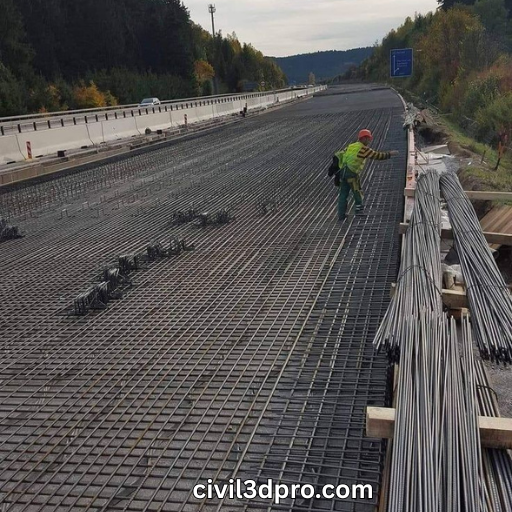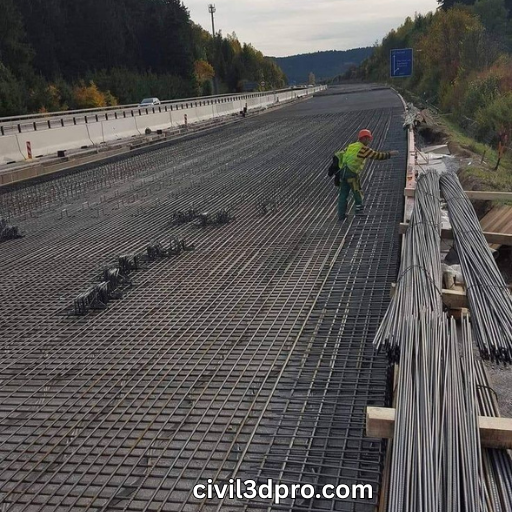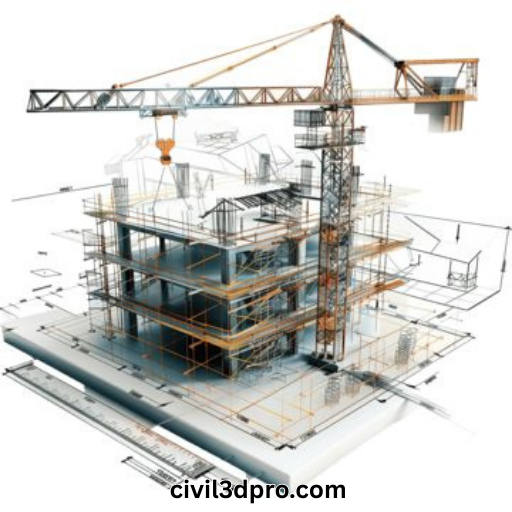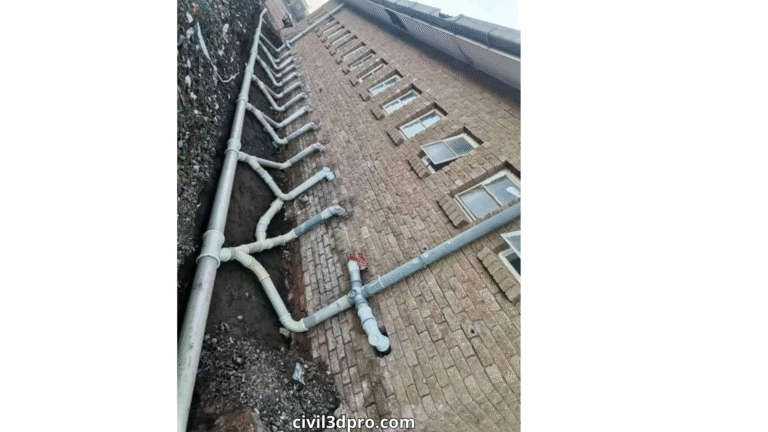Best Practices for Road Design Using Civil 3D Pro
Civil 3D Pro is now the standard software for civil engineering and road design projects. Civil 3D Pro gives engineers and designers the tools they need to make strong and optimized road designs. It is known for its powerful design tools, accuracy, and speed. The software has advanced tools for planning, designing, and managing complicated transportation infrastructure projects, whether you’re working on highways, city streets, or rural roads.
In this article, we’ll talk about the best ways to use Civil 3D Pro to design roads. We’ll focus on making projects more efficient, making sure they are accurate, and improving the overall quality of road projects.

1. Master the Basics of Civil 3D Pro
Before diving into advanced features, it’s essential to understand the basic functions of Civil 3D Pro. The software allows you to:
- Create terrain models: Using surface data from various sources, Civil 3D Pro can create accurate digital terrain models (DTMs).
- Design alignments: Alignments are fundamental to road design and provide the foundation for roadway geometry.
- Design profiles: Civil 3D Pro enables the creation of profile views for roads, helping visualize elevation changes and grade adjustments.
- Design corridors: Corridors are key components in road design, representing the 3D model of the roadway and its features.
By mastering these basics, you can streamline your design process and ensure smoother project execution.
2. Leverage Templates for Consistency
Civil 3D Pro allows users to create templates for common road types, which can significantly improve efficiency. Templates include predefined components such as roadways, shoulders, curbs, and drainage systems. By using templates, you can ensure consistency across projects, save time on repetitive tasks, and maintain design standards.
Best Practice:
- Customize templates to meet local regulations: Each region may have its own standards for road design. Civil 3D Pro allows customization of templates to match these standards, ensuring compliance with local codes and specifications.
- Use standard components: Civil 3D Pro offers a library of standard components, such as road cross-sections and curbs. Utilizing these pre-configured elements can help speed up the design process.
3. Create Accurate and Detailed Surface Models
Creating accurate terrain surfaces is essential for the success of any road design project. Civil 3D Pro provides robust tools for working with surface data, whether you are using survey data, LiDAR, or photogrammetry.
Best Practice:
- Use multiple surface data sources: Integrate data from different sources, such as satellite imagery, survey data, or point clouds, to create highly detailed and accurate surfaces.
- Clean up and validate data: Ensure that the surface data is free from errors and anomalies. This will help you avoid costly mistakes during the design phase.
4. Optimize Road Alignment Design
Road alignment refers to the horizontal and vertical paths of the road. The alignment determines the geometry and profile of the road, and it must be designed to adhere to the project’s specifications and constraints.
Best Practice:
- Use the alignment design tools: Civil 3D Pro offers alignment design tools that let you define horizontal and vertical curves, tangents, and transitions. This makes it easier to meet specific design requirements, such as sight distance or minimum curve radii.
- Perform visibility checks: Make sure the alignment meets visibility requirements for safety. Civil 3D Pro offers real-time feedback on sightlines and visibility, helping you design safer roads.
5. Design Road Profiles with Precision
Profiles are critical in road design, as they show the elevation changes and slope of the road over its length. A profile is essential for determining cut and fill quantities, drainage patterns, and grading adjustments.
Best Practice:
- Incorporate design criteria: When creating road profiles, ensure that they meet required design criteria, including minimum slopes, cross-sectional areas, and drainage requirements.
- Utilize grading tools: Civil 3D Pro provides advanced grading tools that allow for precise manipulation of the road profile. These tools help optimize the profile for efficiency, reducing earthwork costs and enhancing road safety.
6. Design Corridors for Roadway Components
Corridors are three-dimensional models of the roadway, which include the road’s alignment, profile, and cross-section. These models are used to visualize the road’s geometry and to calculate quantities like earthwork, material volumes, and drainage requirements.
Best Practice:
- Use corridor modeling to visualize and refine road design: Civil 3D Pro’s corridor modeling tools allow you to create detailed, interactive models of the road. You can adjust the corridor’s alignment, profile, and cross-sections in real-time.
- Coordinate with other design elements: Ensure that your corridor design integrates seamlessly with other road elements, such as sidewalks, drainage systems, and utilities.
7. Optimize Drainage and Stormwater Design
Efficient drainage design is a vital aspect of road design, ensuring that water is properly managed and does not cause erosion or flooding. Civil 3D Pro offers tools that integrate drainage design with the road layout.
Best Practice:
- Design drainage systems early in the project: Integrating drainage elements early in the road design helps avoid conflicts later in the project. Civil 3D Pro allows you to simulate how water will flow over the road and design drainage accordingly.
- Ensure compliance with stormwater regulations: Check local regulations for stormwater management requirements. Civil 3D Pro allows you to model runoff, detention ponds, and other stormwater management features.
8. Collaborate with Stakeholders Using Shared Data
Collaboration with stakeholders, such as contractors, surveyors, and urban planners, is crucial for road design. Civil 3D Pro allows for seamless data sharing between different teams, ensuring that everyone works from the same information.
Best Practice:
- Use data shortcuts and references: Data shortcuts allow different teams to access and update design files without affecting the master design. By using data references, you can link project components and maintain version control.
- Leverage cloud-based collaboration: Civil 3D Pro integrates with cloud services like BIM 360, allowing for real-time collaboration and project management.
9. Conduct Regular Design Reviews and Quality Checks
It’s important to regularly review your designs and check for errors, omissions, and inefficiencies. Civil 3D Pro has built-in tools for performing design checks and ensuring that your road design meets all required standards.
Best Practice:
- Run design validation tools: Use Civil 3D Pro’s design validation features to check for issues such as grade conflicts, alignment issues, and drainage problems.
- Collaborate with engineers and consultants: Regularly consult with experts and stakeholders to ensure that your design meets safety standards, environmental regulations, and budget constraints.
10. Prepare Comprehensive Documentation and Reports
Once the design is finalized, generating reports and documentation is essential for project approval and construction. it enables you to create detailed construction documents, such as cross-sections, profiles, and bill-of-materials (BOM) reports.
Best Practice:
- Generate accurate and detailed reports: Use Civil 3D Pro’s automated reporting tools to generate up-to-date construction documents. These reports ensure that all stakeholders have the necessary information to proceed with construction.
- Maintain version control: Keep track of document versions and revisions to avoid discrepancies between different project phases.
Conclusion
Civil 3D Pro has a full set of tools that can help engineers and designers make their road design projects the best they can be. Following these best practices will help you make sure that your road designs are correct, work well, and don’t cost too much. Learning how to use the software’s powerful tools will not only make your work easier, but it will also make sure that your road projects meet safety, regulatory, and environmental standards.







